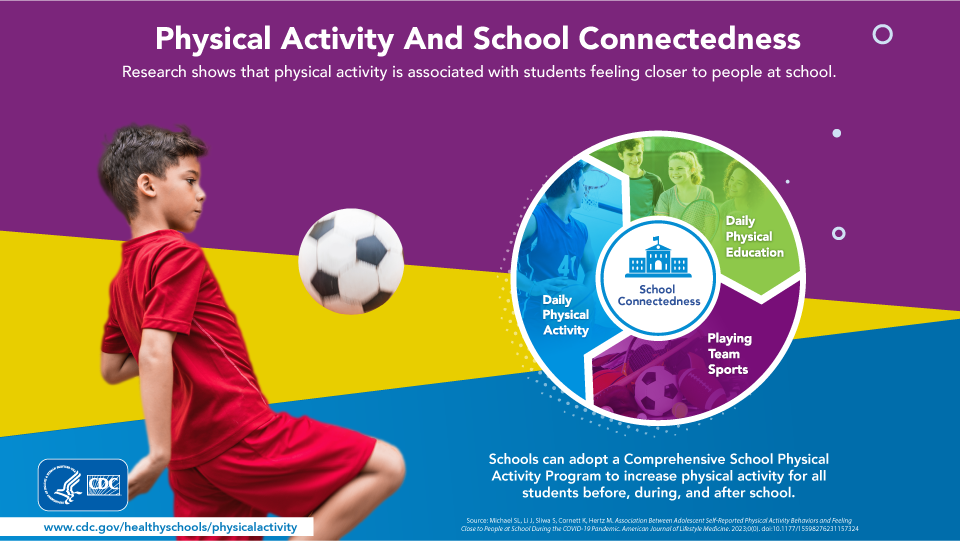School Connectedness

The time, attention, and emotional support school staff give to students can engage them in school and learning.
School connectedness reflects students’ belief that peers and adults in the school support, value, and care about their individual well-being as well as their academic progress. It is an important protective factor that promotes the health and well-being of students. Students who feel more connected to school are:
- Less likely to engage in risky behaviors (violence, sexual health, and substance use).1,2
- More likely to engage in positive health behaviors (physical activity and healthy eating).2,3
- More likely to have higher grades and test scores, have better school attendance, and graduate high school.4,5
- Less likely to have emotional distress and thoughts of suicide among adolescents.1,6-8
A recent study showed that school connectedness during adolescence may have long-lasting protective effects across a range of adult health outcomes including emotional distress, suicidal ideation, physical violence victimization and perpetration, multiple sex partners, STI diagnosis, prescription drug misuse, and other illicit drug use.1
Schools can refer to the Whole School, Whole Community, Whole Child (WSCC) model, CDC’s framework for school health, to promote school connectedness. Within this framework, schools can use the following ways:
- Provide physical activity opportunities (e.g., physical education, recess, classroom physical activity) to give students time to practice skills, such as resolving conflicts, respecting others, cooperating, helping others, and being a role model. All of these skills help enhance school connectedness.
- Encourage school gardening projects, teacher-students lunchtime, and other opportunities to help improve social skills and build positive relationships, which are indicators of school connectedness.
- Help students manage their chronic health conditions (e.g., asthma, diabetes, food allergies) can help them feel more connected at school.
- Provide professional development and support for school staff to help them meet the diverse emotional and social needs of their students.
CDC identified four school connectedness interventions that led to declines in negative health behaviors and experiences among students.
- Family/community mentoring programs
- Service-learning opportunities
- Student-led clubs to provide safe spaces
- Professional development for educators on classroom management

